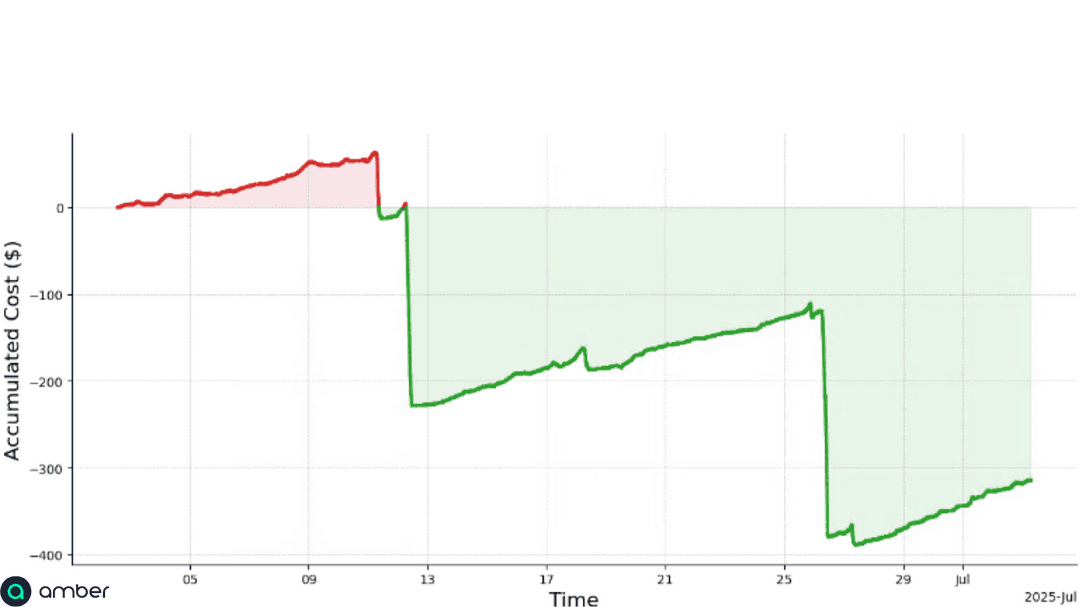Amber Electric, an Australian energy retailer and technology company committed to accelerating the nation's transition to 100% renewable energy, is conducting pioneering trials of vehicle-to-grid (V2G) technology.
The company's testing program demonstrates how electric vehicles can potentially earn their owners substantial credits by selling power back to the electricity grid during peak price periods.
▶️MORE: Watt is Bidirectional Charging, V2G, V2H, V2L?

The trial forms part of a $8.48 million project co-funded by the Australian Renewable Energy Agency (ARENA) and Amber Electric, with $3.2 million in government backing from ARENA.
The program operates in two phases: smart charging capabilities and vehicle-to-grid testing, with plans to roll out 50 bidirectional chargers across participating households.
Real-World Results Show Significant Savings Potential
Testing conducted throughout June in Victoria revealed the substantial earning potential of V2G technology during wholesale price spikes. One participating household using an undisclosed EV brand accumulated approximately A$300 in credits during the month, primarily through three major price spike events.
"The wholesale spot price in Victoria jumped up as high as A$16 per kilowatt hour due to a combination of cold weather and some generator outages," explained Nick from Amber Electric, noting that the system began discharging power back to the grid at approximately 5kW during these peak pricing periods.
The most significant earning opportunities occurred on three specific dates: 11 June, 12 June, and 26 June. During these events, wholesale electricity prices spiked to A$15-20 per kilowatt hour, creating substantial revenue opportunities for participating vehicles.
Strategic Approach to Battery Management
Contrary to expectations that V2G would require daily charging and discharging cycles, the trial results demonstrate a more strategic approach. The data suggests an 80/20 principle applies, where approximately 20% of days account for over 80% of the earnings potential.
"It's not really about plugging in your battery and smashing it every night," remarked Nick from Amber Electric. "These price spike opportunities are really the key times that you want to be performing this activity."
This approach addresses concerns about battery degradation while maximising financial returns.
During non-peak periods, EV batteries can be utilised for vehicle-to-home applications, powering household needs without impacting the vehicle's primary transportation function.
Warranty Concerns Drive Cautious Rollout
The trial's careful approach stems from ongoing discussions with automotive manufacturers regarding warranty implications.
While testing has confirmed that popular EV brands can technically discharge power through bidirectional chargers, formal warranty support remains a critical consideration.
"The problem isn't do they discharge. It's can you give customers confidence that they discharge in a way that your warranty will be guaranteed to still exist by the car company in a formal way," commented Nick from Amber Electric.
The company has been testing with Star Charge Halo and SigEnergy modular storage inverter DC bidirectional charger units.
▶️MORE: Bidirectional (V2H and V2G) EV Chargers Guide (2025)
Equipment and Eligibility Requirements
The trial seeks participants with diverse home energy setups to test various scenarios. This includes households with significant solar and battery installations, high-energy users, and people with different EV usage patterns.
Participants can join a waiting list through Amber Electric's website, providing information about their current home equipment, solar installations, battery systems, and vehicle brands.
The company will contact suitable participants once specific charger types, network approvals, and supported EV brands are finalised.
Future Market Implications
The technology represents a significant opportunity for Australian EV owners to offset their energy costs while supporting grid stability.
Modern EVs typically feature battery capacities of 60–100 kilowatt hours, substantially larger than traditional home battery systems.
"There's a huge opportunity to leverage that storage capacity in your car's battery," noted Nick from Amber Electric, highlighting the potential for widespread adoption as more bidirectional chargers enter the Australian market.
The trial's success could accelerate the deployment of V2G technology across Australia, providing EV owners with additional financial incentives while supporting the electricity grid during peak demand periods.
For more information about the trial and to join the waiting list Amber Electric's application form
About the author

Neerav Bhatt has been a technology journalist and photographer for over 20 years appearing in online, print, radio and TV media. His current focus is on helping Australians switch to electric vehicles as well as making their home fully electric, sustainable and climate resilient. Youtube: www.youtube.com/@NeeravBhatt Web: neeravbhatt.com
Stay up to date with the latest EV news
- Get the latest news and update
- New EV model releases
- Get money savings-deal
